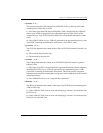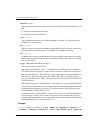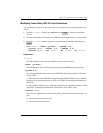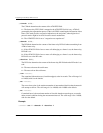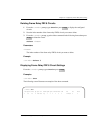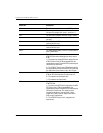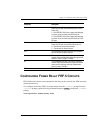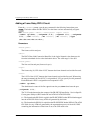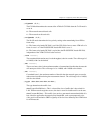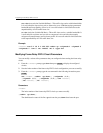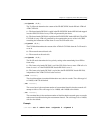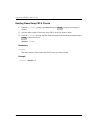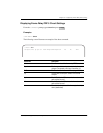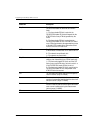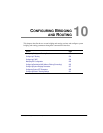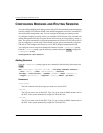
Chapter 9: Configuring Frame Relay Interworking
Avidia System Configuration and Management User Manual 221
[-clpmask (0|1)]
The CLP Mask determines the content of the ATM cell CLP field when the Tx LP mode is
set to 2.
0—The network cannot discard cells.
1—The network can discard cells.
[-rxlpmode (1|2)]
The Rx LP mode determines the loss priority settings when transmitting from ATM to
frame relay.
1—The frame relay header DE field is set if the CLP field of one or more ATM cells of a
frame is set to 1 or if the FR-SSCS PDU header DE field is set to 1.
2—The frame relay header DE field is copied into the FR-SSCS PDU header DE field,
independent of the ATM CLP field value received.
[-CIR <value>]
The committed information rate (circuit throughput) value in seconds. The valid range is 0
to 144000, with 0 as the default.
[-Be <value>]
The excess burst value is the maximum number of uncommitted data bits that the network
will attempt to deliver. The valid range is 0 to 144000, with 144000 as the default.
[-Bc <value>]
Committed burst is the maximum number of data bits that the network agrees to transfer
under normal conditions during the measurement interval. The valid range is 0 to 144000,
with 0 as the default.
[-type (ubr|cbr|nrt-vbr|rt-vbr)]
The type determines the traffic class.
ubr (Unspecified Bit Rate)—This is a best-effort class of traffic that is best suited for
LAN. When network congestion occurs, the data is stored in a buffer until it can be sent.
cbr (Constant Bit Rate)—This traffic class carries a guaranteed constant bandwidth. It is
best suited for applications that require fixed bandwidth, such as uncompressed voice,
video, and circuit emulation. CBR is a Quality of Service class defined by the ATM Forum
for ATM network.



